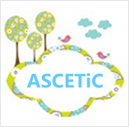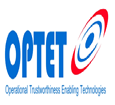Blockchain, Clouds & ICT
Projects in Progress
TRUSTCHAIN
Under the European Commission Next Generation Internet initiative, TrustChain is launched in January 2023. TrustChain aims to create a portfolio of Next Generation Internet protocols and an ecosystem of decentralized software solutions that reach the highest standards of humanity such as those chartered by the United Nations including the respect of human rights, ethics, sustainability, energy efficiency, our care for the environment and our respect for the World’s cultural history.
TrustChain will tackle several challenges pertaining to trustworthy and reliable digital identity, to resilient, secure and reliable data pathways, to economics and trading of data, to energy efficiency for data storage, transport and sharing, to seamless services and data flows. A new trustworthy data governance and sharing model will be developed in line with the European regulatory framework and taking into account European values while ensuring Trusted Data Ecosystems.
Through its five Open Calls, TrustChain will support top Internet innovators (academies and high-tech companies) with a total amount of €8.8 million, distributed with focus on:
- Decentralized digital identity
- User privacy and data governance
- Economics and democracy
- Multi chains support for NGI protocols
- Green, scalable, and sustainable DLTs
BUILDCHAIN
80% of Europe's buildings will still be in use in 2050. Action is needed to preserve their integrity and value. Modern countries generate an incomparable amount of data and information about the building stock, such as 3D geometry data, operational information, measurements, etc., which are usually lost or unused, unstructured and not updated.
BUILDCHAIN’s vision is that this information and data have the potential to change the way we design, construct, and maintain our buildings.
BUILDCHAIN will create a scalable BIM-based decentralized knowledge platform to digitally identify, register, update, and analyze massive amounts of data related to the overall life-cycle of buildings based on Origin Trail Decentralized Knowledge Graph. The BUILDCHAIN project will design and develop its own Digital Building Logbook solution for the integration of building data and knowledge, and the inclusion of new applications and functionalities dealing with integrated information, efficiency, circularity and transparency to improve the building stock, facilitate informed decision making and its validation.
Showcase of Selected Outcomes
A Business Model for Multi-Tiered Decentralized Software Frameworks: The Case of ONTOCHAIN
Open source licensing enables the inception of collective building of integrated decentralized software frameworks. However, when individual constituents of such a framework are built by independent companies where each of them has its own business plan, then the joint exploitation of the overall software framework becomes very complicated. In the context of NGI OntoChain project, we addressed this problem, by studying in depth the special case of the joint exploitation of the ONTOCHAIN (OC) blockchain-based software framework that is being built by many companies, each having its own business agenda. We defined the business model of OC, whereby the management and maintenance of the jointly-built platform is assumed to be undertaken by a new venture; this offers the platform for dApp (decentralized application) deployment and as a PaaS for development and testing of dApps. We studied the business models of all stakeholders in the OC ecosystem and analyze them as a part of the overall value network. Based on realistic revenue and cost parameter assumptions, and analyzing concurrently the business models of all stakeholders in this ecosystem, we established that win-win outcomes are economically sustainable, provided that revenue sharing is properly coordinated.
ENERGY-AWARE PRICING MODELER COMPONENTS FOR CHARGING CLOUD RESOURCES
ASCETiC delivers a framework consisting of tools and methods, so named ASCETiC Toolbox, covering each phase of development lifecycle for implementing energy efficient cloud services at the different layers of a cloud stack. The PaaS and IaaS Pricing Modeler is part of the ASCETiC framework and have been designed by the AUEB team. The PaaS Pricing Modeler is situated in the PaaS layer of the cloud stack, and its main functionality is to estimate the price per hour and charges of an application before deployment, as well as to calculate its charges after its operation. The Iaas Pricing Modeler is situated in the IaaS layer of the cloud stack, and it is used to estimate the price per hour and the charges of a VM before deployment, as well as to calculate its charges after its operation. The goal of the IaaS Pricing Modeler is to provide energy-aware price estimation related to different IaaS level operations that may be envisioned in order to take the most energy-efficient course of action.
The ASCETiC Toolbox functionalities are shown in a set of webinars that can be accessed following the provided links.
ASCETiC IaaS tools ASCETiC PaaS Tools
ASCETiC SaaS Programming Model ASCETiC SaaS Design Tools
Download presentation
Trust metric estimator
The Trust Metric Estimator (TME) is a Bayesian trust computational model that helps system administrators identify and react to anomalies in user experiences. The TME is accepting notifications (atomic events) about end-user registrations, as well as, service performance to user requests in order to estimate individual user trust levels for a wide range of trustworthiness metrics. Trust levels depend not only on system performance but on a key user attributes as well, thus 2 users could trust differently a system even though they have witnessed the exact same outcomes. By comparing the current trust level for each metric with the high and low threshold set by the administrator, a high/low alert is sent to the service administrator’s dashboard (e.g., the OPTET Management framework) for further action, if necessary. TME meets the FIWARE Generic Enabler requirements and can be used together with other Generic Enablers, especially the ones developed by the rest OPTET partners.
The source code is available on demand.
Download presentation Download the API guide
End-to-End Trustworthiness Calculator
The End-to-End Trustworthiness Calculator (E2E TW Calculator) is a software component that was developed in the context of the OPTET research project targeting both producers and users of other software products. In the former case, the designers of composite systems (e.g., running on the cloud), can use E2E TW Calculator for estimating the trustworthiness requirements of a system part to be developed so that the overall system trustworthiness requirements are met. In the latter case, it can help the consumers of trustworthy socio-technical systems, to have an estimation of the system trustworthiness in terms of trustworthiness metrics, attributes and an overall trustworthiness value and thus find the most appropriate configuration. Finally, it meets the FIWARE Generic Enabler requirements and can be used together with other Generic Enablers, especially the ones developed by the rest OPTET partners.
The source code is available on demand.
Download demo 1 Download demo 2Research Topics
- Incentive mechanisms for fair resource allocation and adoption
- Reputation and pricing mechanisms
- Performance evaluation using game-theoretic models
- Socio-economic analysis
- Trust computational models
- System trustworthiness








